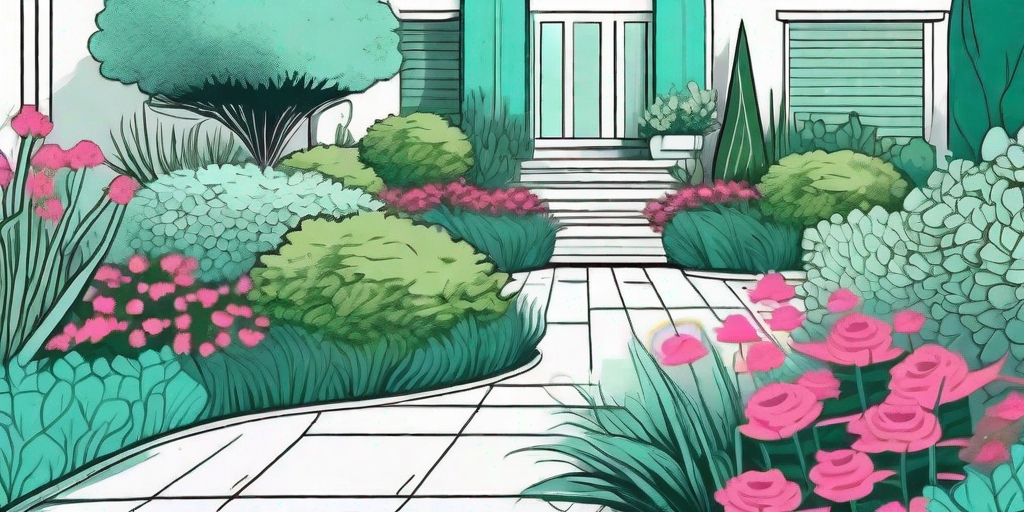
Gardening, much like life, can be a chaotic endeavor. One day you're planting a cute little shrub, and the next thing you know, it's grown into a monstrous green beast, taking over your once pristine garden. But fear not, dear reader, for this is not a tale of despair. Instead, it's a story of redemption, a guide to taming the wild and reclaiming your garden's beauty. So, grab your shears and put on your gardening gloves, because it's time to trim the chaos!
Understanding Your Green Adversaries
The Nature of Shrubs
Before we dive into the nitty-gritty of taming your overgrown shrubs, it's essential to understand what we're dealing with. Shrubs, or as I like to call them, 'the green beasts', are woody plants with multiple stems. They're like the middle child of the plant world, not quite a tree, but more substantial than a flower. They can be deciduous or evergreen, and they come in all shapes and sizes. But one thing they all have in common is their uncanny ability to grow out of control if left unchecked.
Shrubs are a crucial part of any garden, providing structure, color, and often, a habitat for wildlife. But when they start to take over, they can block light, impede paths, and generally make your garden look like a scene from 'Jumanji'. So, it's important to keep them in check.
Why Do Shrubs Overgrow?
Shrubs overgrow for a variety of reasons. Sometimes, it's simply a case of them being too happy. Yes, you read that right. If your shrubs are in a spot they love, with the right soil, light, and moisture conditions, they can grow faster than you might expect. Other times, it's due to a lack of pruning. Like a haircut, shrubs need regular trims to keep them looking their best.
Overgrown shrubs can also be a sign of a deeper issue, such as a nutrient imbalance in the soil or a pest problem. So, if your shrubs are growing like they're on steroids, it might be worth getting your soil tested or checking for signs of pests.
How to Tame Your Overgrown Shrubs
Step 1: Assess the Situation
Before you start hacking away at your shrubs, take a moment to assess the situation. Look at the size, shape, and health of the shrub. Is it just a little overgrown, or has it turned into a full-blown shrubzilla? Are there any dead or diseased branches? Are there any birds nesting in it? These are all things to consider before you start pruning.
It's also a good idea to do a little research on your specific type of shrub. Some shrubs respond well to hard pruning, while others might not. Knowing your shrub's likes and dislikes can save you a lot of heartache down the line.
Step 2: Gather Your Tools
Once you've assessed the situation, it's time to gather your tools. For most shrubs, you'll need a pair of hand pruners for small branches, loppers for larger branches, and a pruning saw for the really big stuff. You might also want to grab a pair of gardening gloves to protect your hands, and a tarp to catch the clippings.
Remember, sharp tools make for clean cuts, which are less likely to lead to disease. So, make sure your tools are in good condition before you start.
Step 3: Start Pruning
Now comes the fun part: pruning. Start by removing any dead, diseased, or damaged branches. Then, start shaping the shrub by removing any branches that are growing in the wrong direction. Remember to make your cuts at a 45-degree angle, just above a bud or branch.
When it comes to how much to prune, less is more. It's better to prune a little and then step back and assess, rather than prune too much and regret it. After all, you can always cut more, but you can't uncut a branch.
FAQs
When is the best time to prune shrubs?
The best time to prune shrubs depends on the type of shrub and its flowering schedule. As a general rule, shrubs that bloom in the spring should be pruned after they finish flowering, while shrubs that bloom in the summer or fall should be pruned in late winter or early spring.
How often should I prune my shrubs?
How often you should prune your shrubs depends on the type of shrub and how quickly it grows. Some shrubs need to be pruned once a year, while others can go a few years between prunings. When in doubt, it's best to err on the side of less frequent pruning.
Can overgrown shrubs be cut back hard?
Some overgrown shrubs can be cut back hard, or 'renovated', to rejuvenate them. However, not all shrubs respond well to this treatment, and it can sometimes kill the shrub. So, it's best to do a little research on your specific type of shrub before attempting this.
Conclusion
So, there you have it, a comprehensive guide to taming your overgrown shrubs and reclaiming your garden's beauty. Remember, gardening is a journey, not a destination. So, don't be disheartened if your shrubs don't look perfect right away. With a little patience, a little knowledge, and a lot of pruning, you can transform your garden from a chaotic jungle into a serene oasis.
Now, go forth and trim the chaos!















